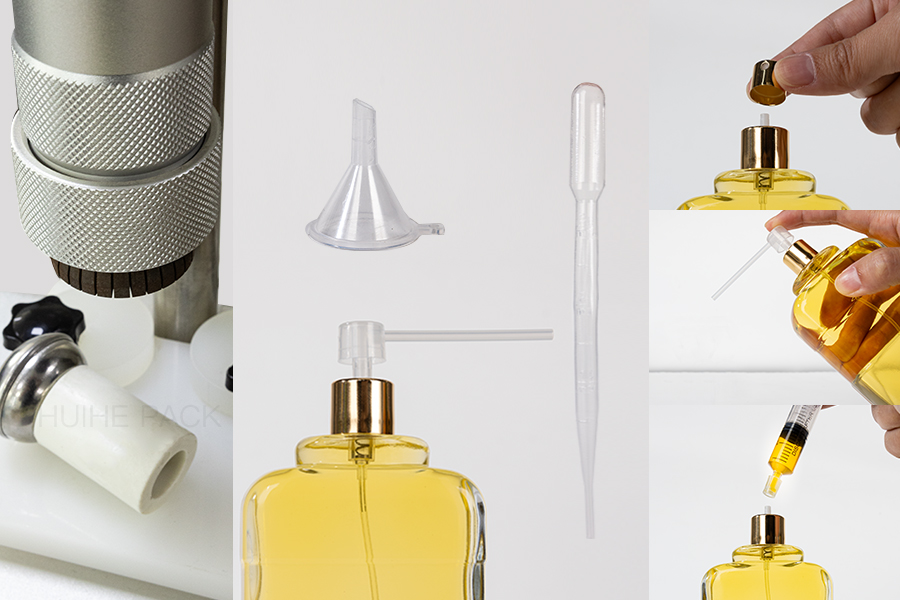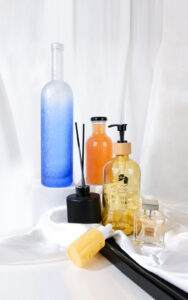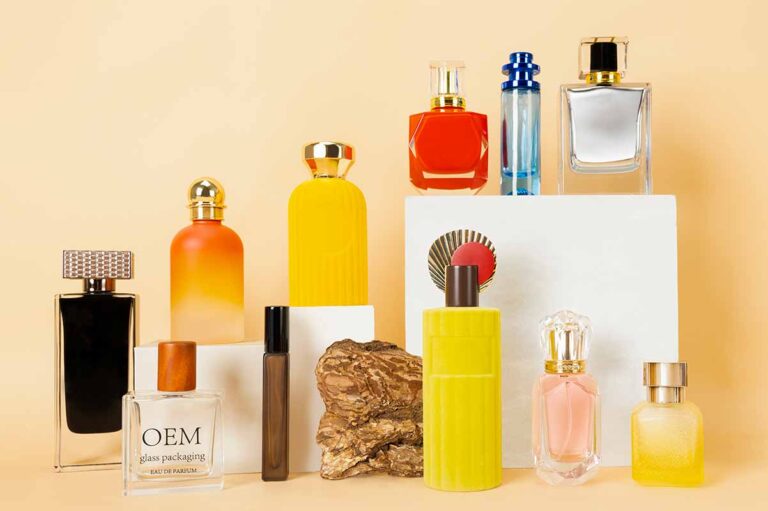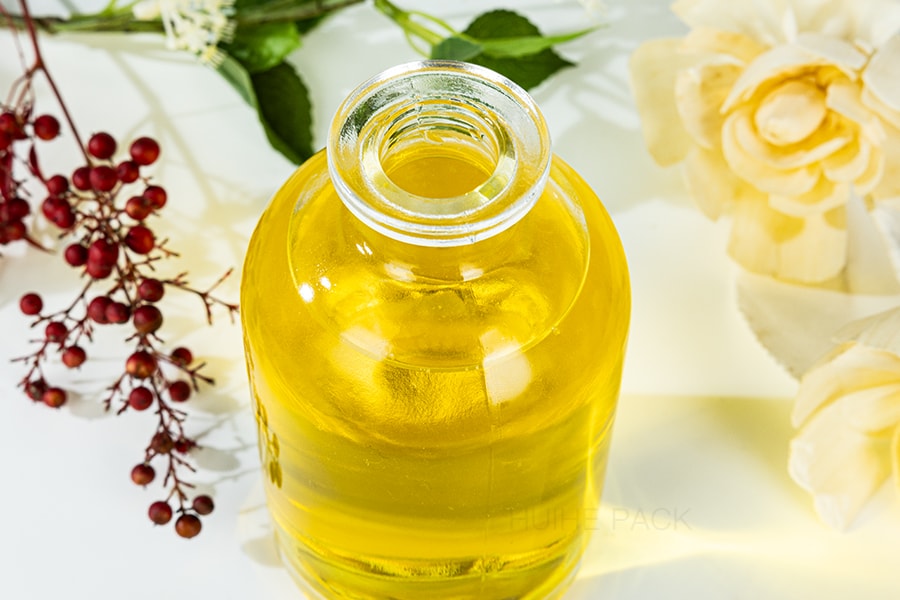
More and more people are choosing to work with brands that prioritize sustainability. Refillable perfume bottles are a great attraction for eco-conscious consumers, and brands should capitalize on this trend. But brands are not the only ones gaining from refill perfumes; you can, too!
Want to know how to refill perfume better? Read our detailed post on how to refill perfume bottles easily and effectively.
Introduction to Perfume Refilling
Refilling perfumes allows you to transfer perfume directly from a new bottle to the same old bottle. Or when travelling, there is no need to bring the whole bottle. Refill or top up the perfume to a smaller bottle for easier and more convenient carrying.
Refilling perfumes instead of buying new bottles every time is your contribution to saving on materials, energy, and new bottle packaging.
Refill bottles are a great way to save you some money, too! They are cheaper and allow you to access different fragrances in smaller, more affordable sizes. Refill bottles make perfect gifting sets with various fragrances to surprise your loved ones.
Understanding the Perfume Bottle
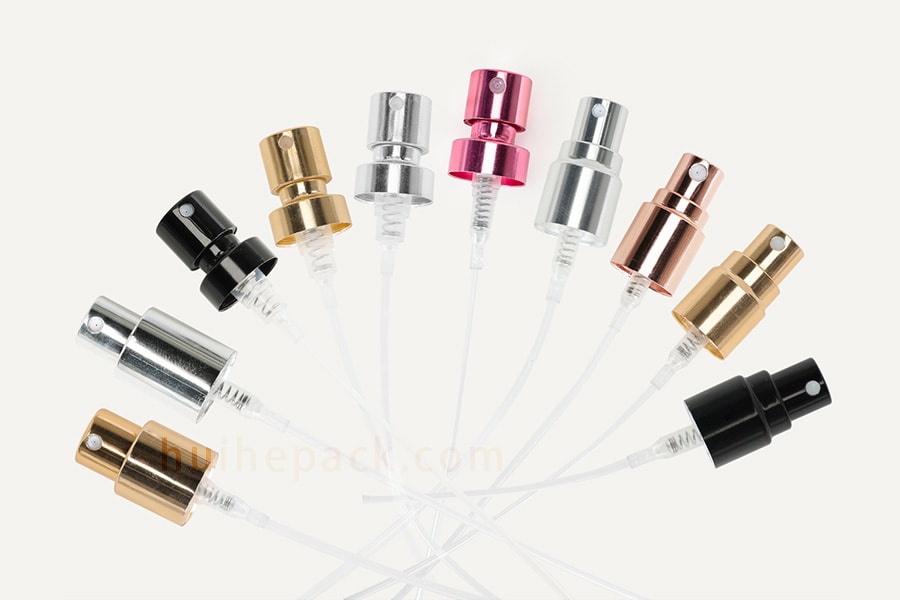
Refill perfume bottles are available in a variety of materials, designs, and sizes. Choosing the best kind for you will depend on how you want to use it and the type of perfume.
Identifying Your Bottle Type
Knowing how the refill bottle opens is crucial to avoid injury or damage. Refill bottles have different opening mechanisms. A screw cap bottle has a lid that you only need to unscrew in the opposite direction of the screwing. Opening the screw-cap is easy, making it the most common bottle type.
The second type is the spray nozzle bottles with heads that you can either screw or snap on top. It is easy to spray directly, producing the perfume in a fine mist. Secure the screw type correctly, as it tends to loosen or leak.
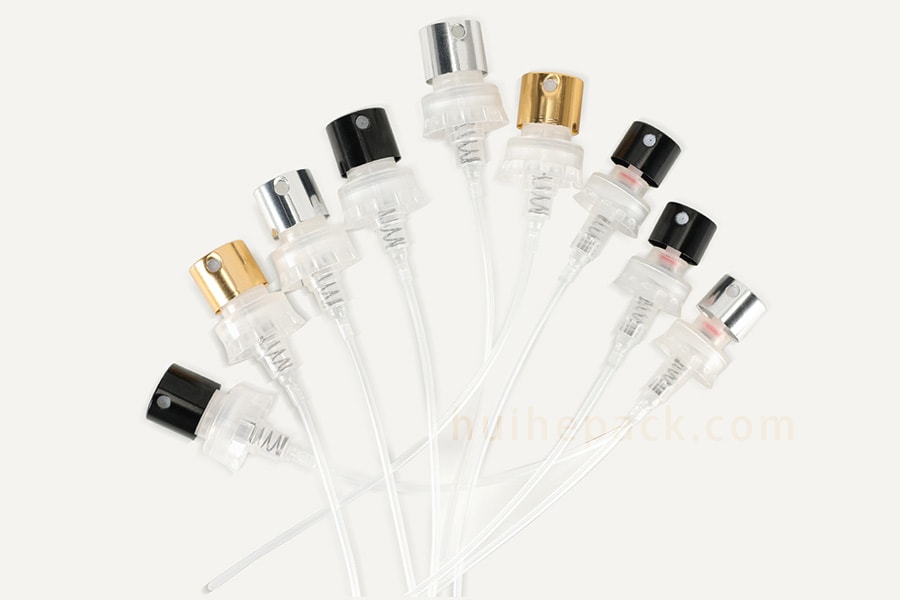
The crimped top version has a metal collar that is fixed to the bottle and doesn’t twist. Some people find opening these types of bottles a bit challenging, but they are less likely to spill and are safer. You will need tools such as pliers, a craft knife, or a small flathead screwdriver to open the screwed spray heads.
The rollerball refill perfume bottle is small in size and has an applicator for applying. The applicator has a small ball that rolls at the neck of the bottle, picking up the perfume and applying it directly on the skin, with no fine mist, spills or leaks. Its compact size makes it easy to carry in a travel bag or purse, and the Transportation Security Administration (TSA) often approves it.
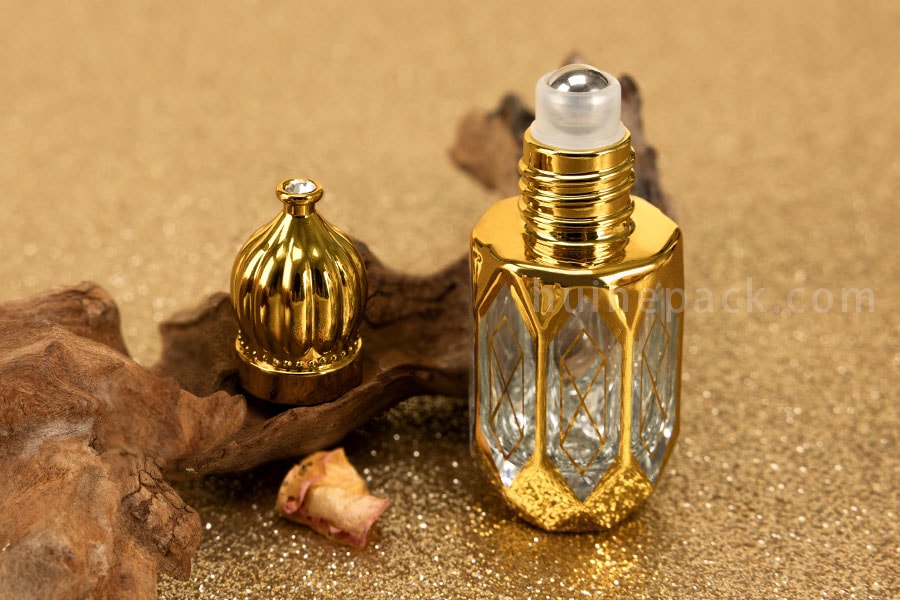
Material Considerations
Bottle Material Type | Pros | Cons |
Plastic | Cheaper and lighter than other materials and easily portable. | It is a bit weak and is likely to crack or break. |
Some brands use recyclable plastics to reduce plastic waste. | Certain plastics can react with the perfume’s ingredients, affecting the smell. | |
Shatter-resistant and suitable for travel. | Scratch easily, looking worn out faster than glass or metal. | |
Glass | It is a strong material and easy to shape into any size. | It can easily break. |
The material is chemically stable and does not react with the perfume’s ingredients. | More expensive to produce than plastics. | |
It is readily available, transparent (see the amount) and inexpensive. | ||
Metal | Stainless steel and aluminum are the most ideal for perfume refill bottles and parts. | A bit heavier than some materials. |
They offer greater durability and can better resist drops compared to plastic and glass. | More expensive than glass or plastic. | |
Primarily designed as atomizers. | Cannot see how much perfume is left. |
Why Bottle Knowledge Matters
But can you refill perfume bottles? It is possible, and you should start by understanding the type of bottle you want to use for refilling. The bottle material can affect the scent. For example, certain plastics can leach chemicals, causing the perfume to lose its fragrance over time.
Specific bottle designs make it easier to refill than others. Knowing the proper filling techniques helps ensure you fill to the correct level and avoid spills that can cause a mess.
Preparing for Refill
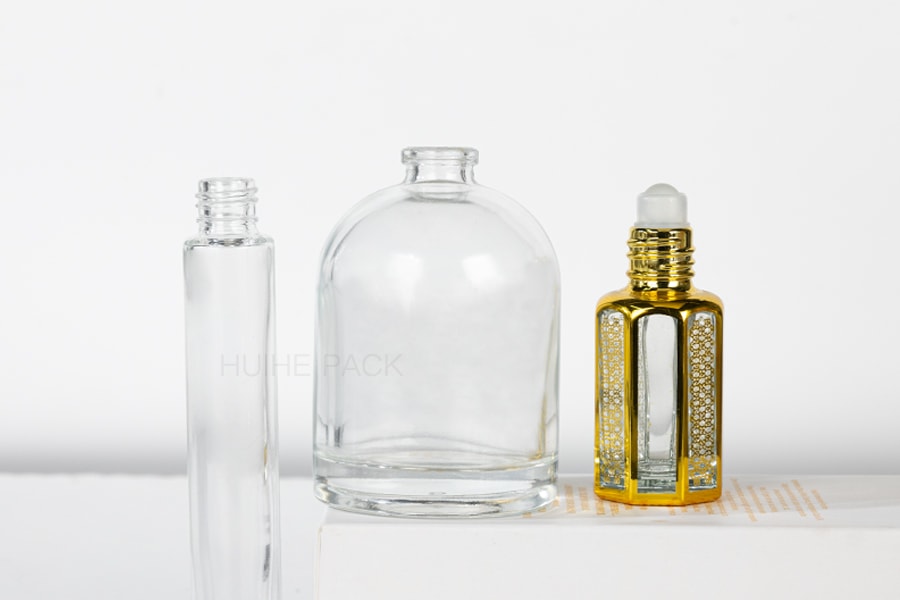
Cleaning the Bottle
Start by thoroughly cleaning the bottle to avoid contamination. Dip a lint-free cloth with alcohol and wipe the bottle to remove dust and any residue. Rinse with warm water and ensure the bottle dries completely.
Remember to clean the atomizer, nozzle, pump and roll-ons. Check the bottle thoroughly for any cracks or chips. Avoid refilling bottles that have damage to avoid leaks; instead, buy a new one.
Choosing the Right Tools
Assemble the right tools for a splash-free refill. Essential tools include a funnel or pipette that helps minimize spills and wastage when transferring the perfume from the original bottle. A syringe, though optional, is crucial for bottles with a spray mechanism to extract the perfume.
Have cotton pads to wipe the bottle after the refill, and a small flathead screw driver for a crimped bottle head. The table surface should be flat and clean to provide a stable environment for refilling.
Handling with Care
The refilling process should be in a well-lit and ventilated area to avoid any accidents. Avoid shaking and overtightening caps to prevent damage to the bottle and altering the perfume content.
Pouring directly from the original bottle is not ideal. Avoid leaving the refill perfume bottles exposed to air, as they degrade easily. Store the bottles in a place that is not moist or sun-exposed.
Decanting Perfume
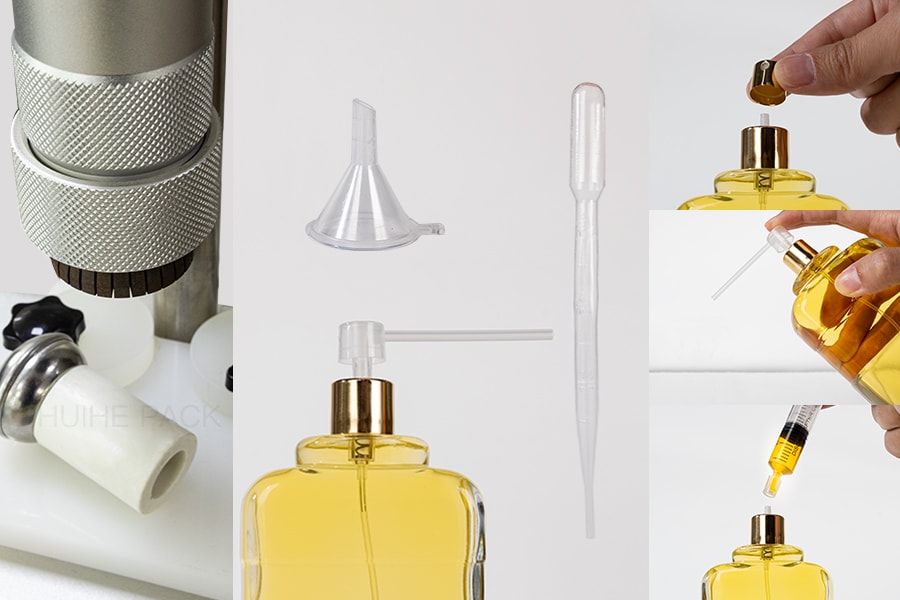
What is Decanting?
Decanting means transferring perfume from a larger bottle to a smaller one. It is normal to decant for several reasons, such as getting smaller bottles for travel, samples, gifts or trying a new scent before buying. Some small business owners decant portions for selling.
Follow our simple steps below on how to decant cologne.
Best Tools for Decanting
The original bottle will often determine the tools you’ll need for decanting.
- A funnel is an ideal method for a splash bottle or a perfume bottle without the traditional spray mechanism, allowing direct pouring.
- A syringe/pipette is ideal for a perfume bottle with a tiny opening, where extraction is crucial. Gently pull the plunger to avoid splashing.
- The transfer tube is an ideal method for larger batches of samples. Use tube dispensers that have atomizer heads to make the flow easier.
- Direct spritz is ideal for small samples, where you only have to spray straight from the original bottle to smaller ones.
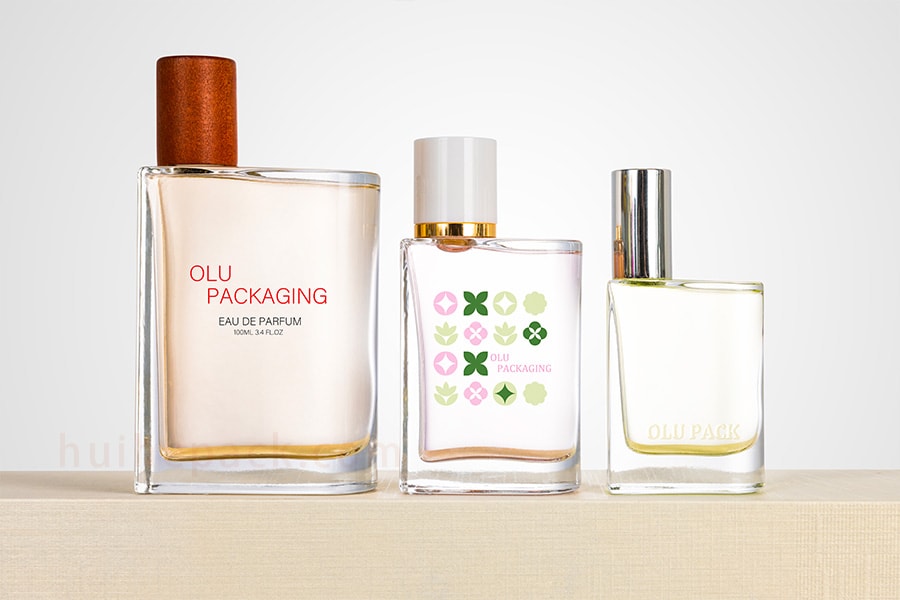
Step-by-Step Process
Some brands provide decanting instructions on the packaging. However, if you’re wondering how to transfer cologne from one bottle to another, we provide an easy-to-follow process.
- Choose the perfumes that you want to decant.
- Hold the refill perfume bottle upright and open it, depending on the system.
- We recommend either using a small funnel or syringe for precision and to avoid wastage.
- From the original perfume container, pour slowly to avoid refilling or bubbles.
- Ensure to leave a little space at the top to fit the spray mechanism.
- Clean the mouth of the perfume bottle and replace the sprayer mechanism. Seal the bottles correctly to prevent leakage.
- Use a soft cloth to wipe down any residue on the side of the perfume bottle.
Removing Obstacles
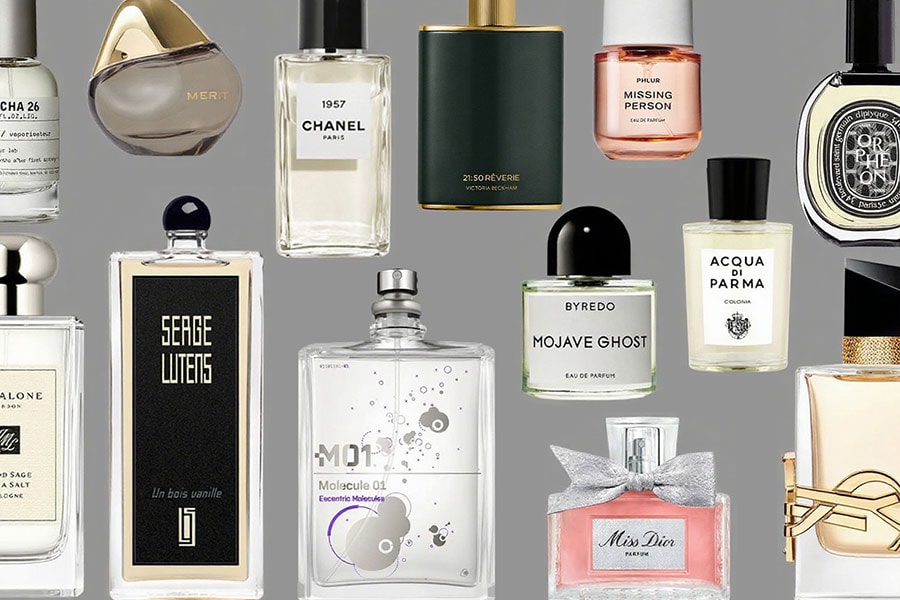
Dealing with Stuck Caps or Nozzles
Put the cap or nozzle in warm water to loosen any dried residue. Grip the cap and gently twist and pull it upwards.
Use a small knife or pliers if the nozzle is still stuck, but be careful to avoid damage.
Fixing Clogged Sprayers
Rinse the nozzle under warm water while spraying to remove loose debris.
If that doesn’t solve the problem, take off the nozzle and clean it using alcohol or a water-vinegar solution. Rinse it once more with warm water.
Replacing Damaged Parts
Online marketplaces are the ideal places to buy compatible sprayers, atomizers, or caps that have been damaged. Amazon, Alibaba, and AliExpress are some of the places to check and order.
Alternatively, check out stores that specialize in perfume accessories or craft stores for smaller units.
Precautions
When carrying out the refilling process, it is ideal to do it slowly to avoid spilling, which can lead to wastage. Avoid using force, as you can easily break the sprayer or the bottleneck.
Common Mistakes to Avoid
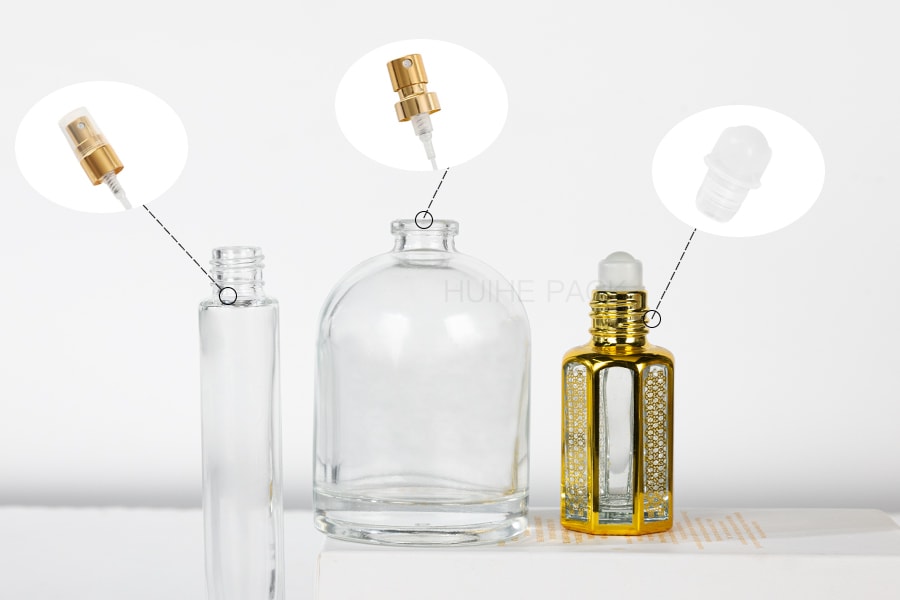
Using incompatible bottle materials
Using incompatible materials can ruin your perfumes. Avoid using plastics, as most will react with the concentrated ingredients of the perfumes. Plastic material can release or absorb chemicals that can alter the perfume’s scent.
We recommend choosing glass if unsure of the materials used to make the perfume bottles.
Transferring in humid/dirty environments
Oxygen causes oxidation, degrading the fragrance. Avoid exposing the fragrance to air and humidity. Close the bottles immediately and use methods that can make the transfer swift.
The decanting process should not be in a dirty environment to avoid contamination. All the tools and decant bottles should be clean.
Not labeling your decanted fragrance
It is essential to label your decanted fragrances immediately. With so many bottles, it is easy to forget what’s inside. Write the name of the fragrance, the date, and the concentration.
Mixing different scents accidentally
Failing to clean the bottles or tools can lead to accidentally mixing the new fragrance with the old one, creating an unwanted smell. Even a small hint of the old fragrance can affect the new one, making it smell odd or weaker.
Use separate bottles for each scent to avoid mixing. Thoroughly clean the bottles and ensure they dry completely.
Perfume Application
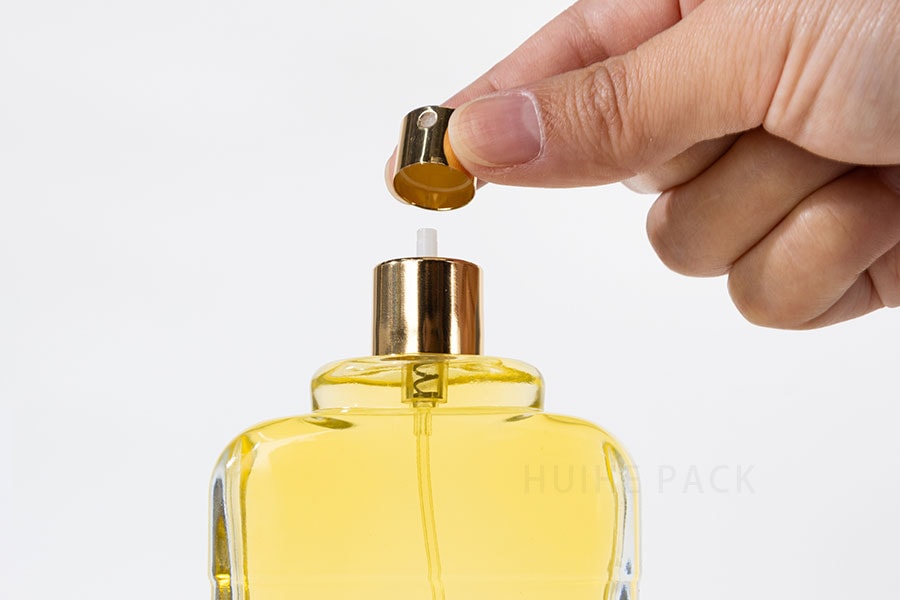
Applying your perfume correctly allows you to make a good statement and leave a lasting impression. Here are a few tips to achieve this.
- Select the right fragrance and prepare your skin by cleaning, drying, and moisturizing with an unscented or lightly scented moisturizer. Keep the perfume bottle about 4-6 inches from your skin to ensure it sprays evenly.
- Do not mix too many fragrances. If you’re using a strong perfume, choose a subtle body lotion.
Final Thoughts:
Refilling perfume bottles is a great way to save and contribute to sustainability. When refilling, it is essential to use the right tools and follow proper techniques for a clean and efficient process.
At HUIHE PACK, we provide high-quality refill perfume bottles designed for durability, safety, and style. If you’re looking for the perfect packaging solution for your fragrances, contact us and we’ll help you find the right fit.
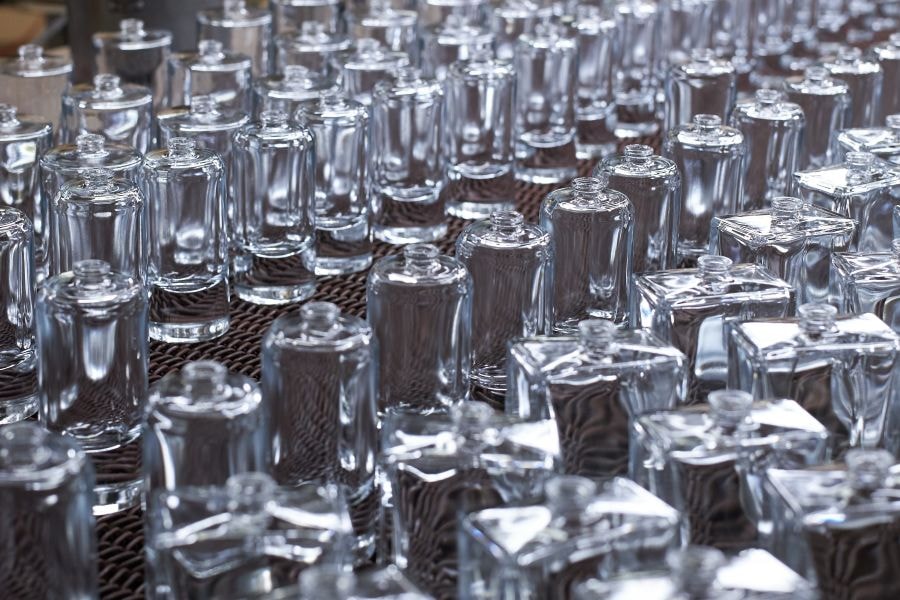
FAQs:
Is refilling perfume bottles sustainable?
Yes, refilling perfume bottles is sustainable. New bottles require more raw materials and energy, while their manufacture and transport emit greenhouse gases.
Why aren’t perfume bottles filled to the top?
The space allows the perfume to expand and contract, helping to avoid leakage. It also avoids perfume spilling when opening or closing.
How to fill gas in a perfume bottle?
Unlike aerosol cans, perfume bottles don’t need gas. Instead, perfume atomizers rely on air pressure and a pump system. When you press down on the sprayer, it builds pressure inside the bottle, pushing the perfume out through the nozzle.
What are the benefits of refilling perfume?
The cost savings are that you don’t have to buy new bottles, which can be expensive. Helps conserve materials and energy associated with manufacturing new perfume bottles while also reducing waste.
How do I clean a perfume bottle before refilling?
Empty any remaining perfume and rinse the bottle thoroughly in warm, soapy water. We recommend adding some vinegar and using a soft brush to reach the bottom end of the bottle. Let the bottle dry completely before refilling the perfume.
Can I reuse commercial fragrance bottles?
Yes, you can by refilling with new fragrances, turning them into flower vases, candle holders, DIY decor, or hanging them as ornaments. Consider using them as DIY diffusers or storage containers for small items such as beads or jewelry.
How long does decanted perfume last?
How long decanted perfumes last largely depends on how they are stored and the ingredients in the fragrance. However, most will last up to 3 to 5 years.

